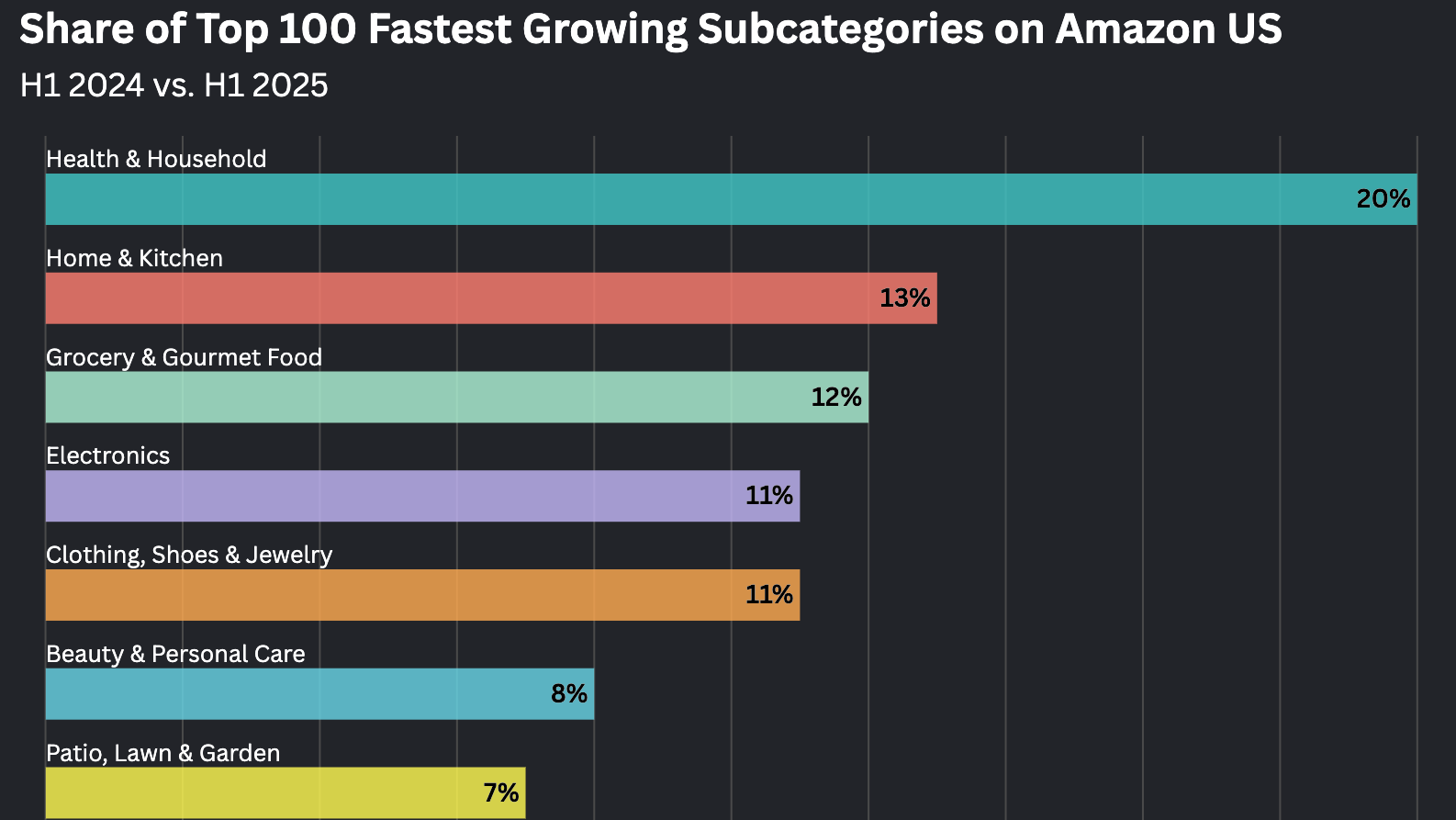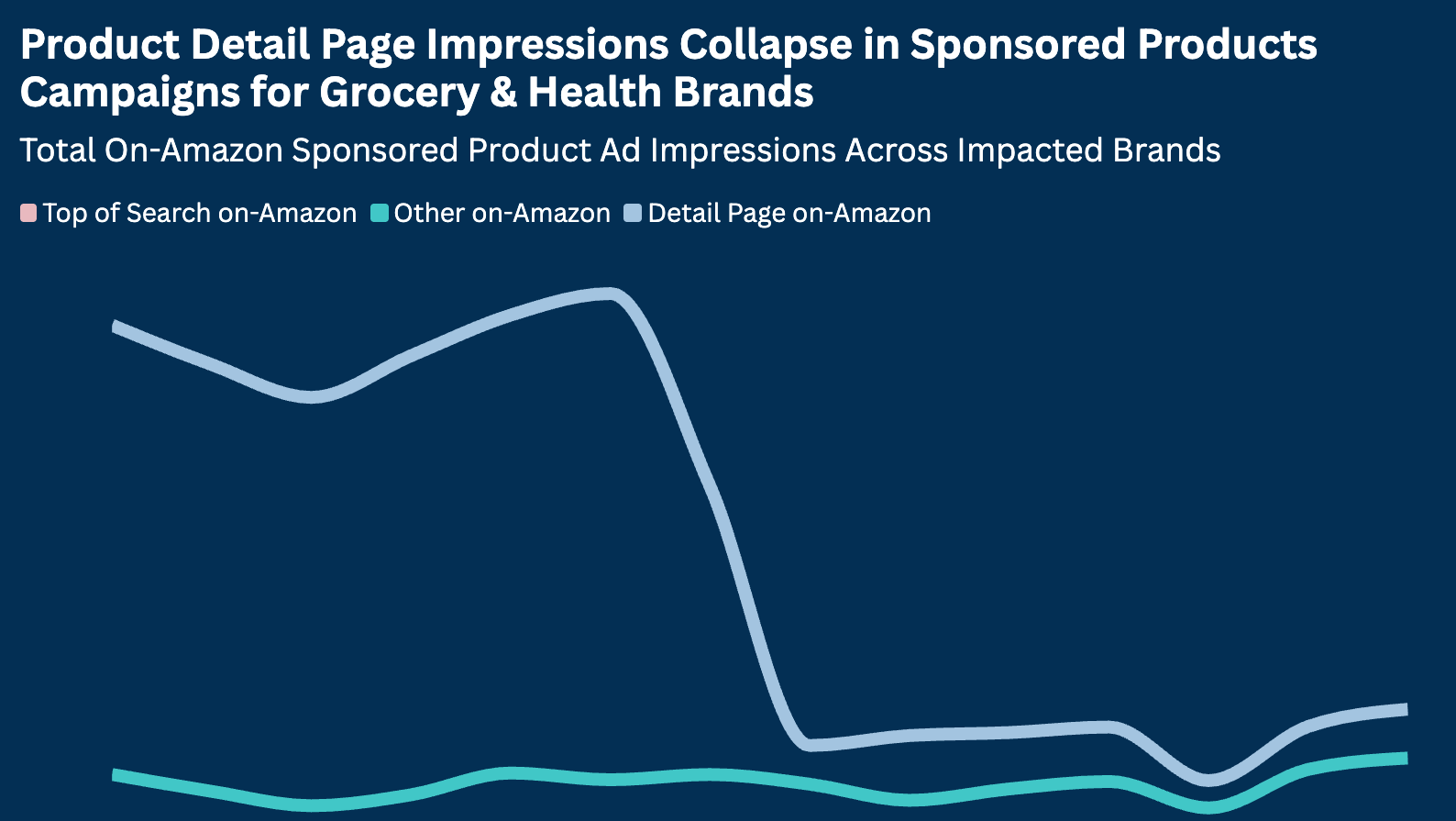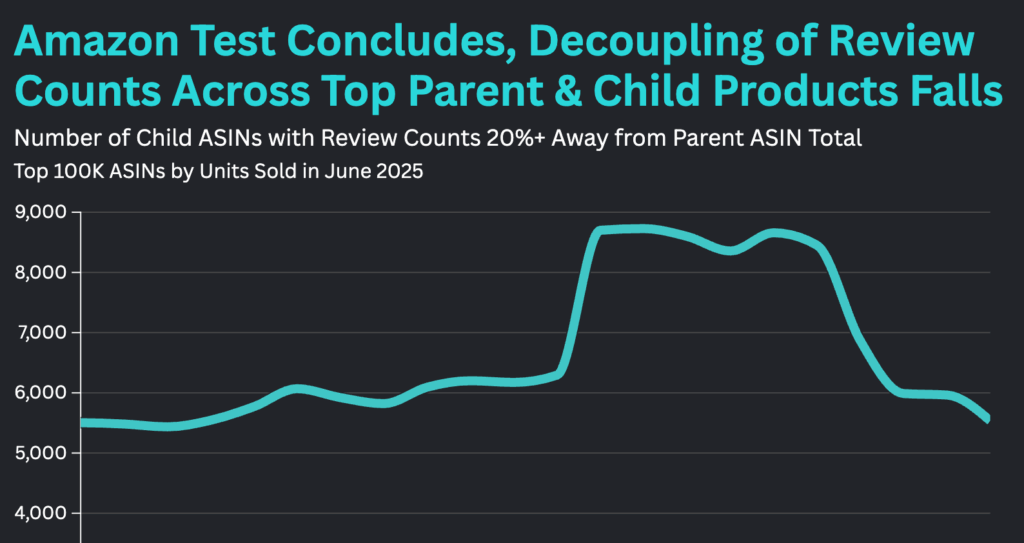
Parent-Child Review Decoupling Experiment Seemingly Ends on Amazon US
Last week, we outlined how Amazon quietly ran what may be its most significant test of product information display in years, expanding the decoupling of review counts between parent and child ASINs. However, after receiving word a few days later that the experiment was ending imminently, we tracked daily rates of ‘review decoupling’ until those numbers began dropping substantially starting on Friday, August 8.
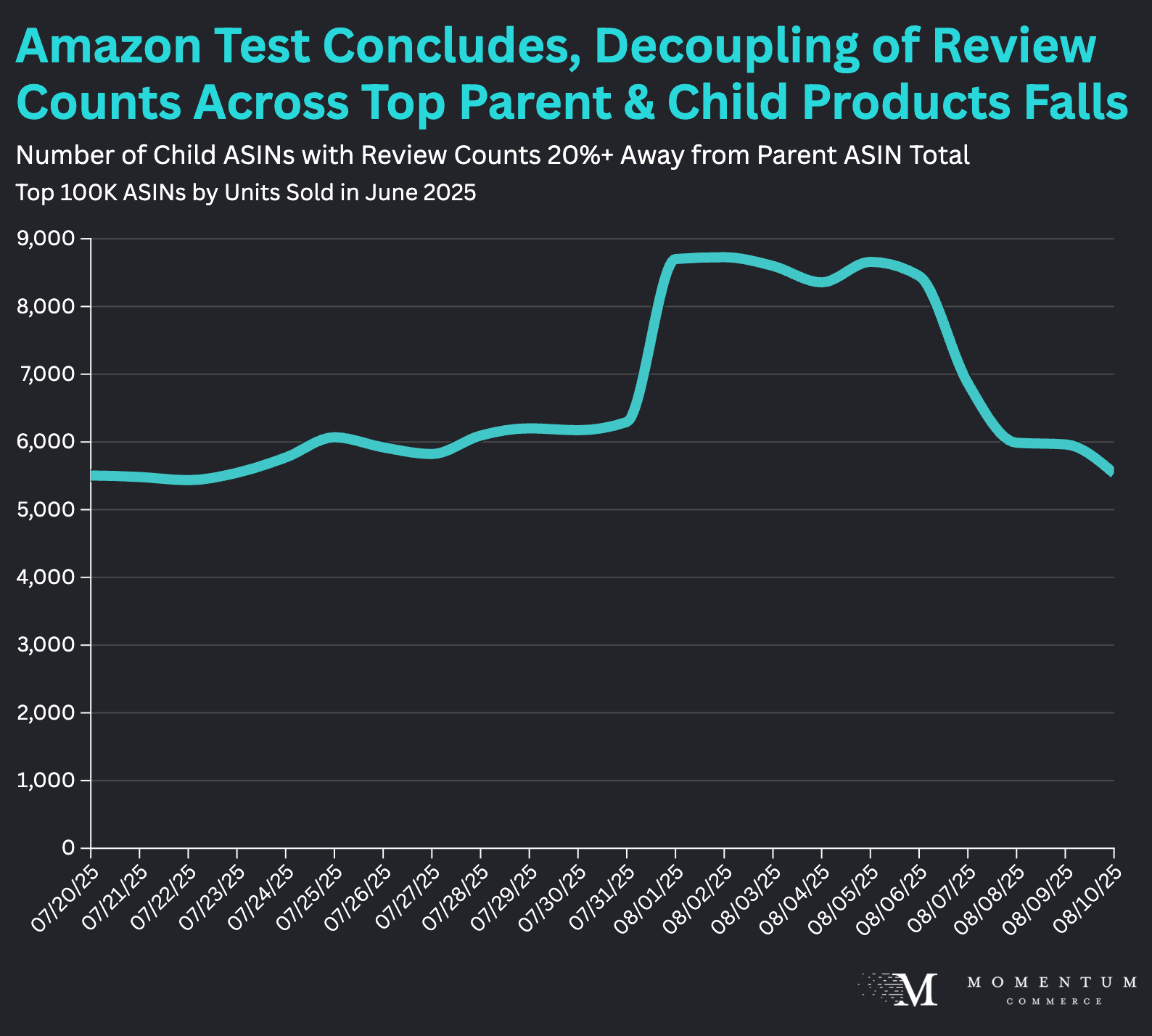
These changes were visible both on the search results page, along with product detail pages. The changes in review counts meant that while some variations would hold ‘Top Reviewed’ badges, others would not. As one example, you can see the below Yeti tumbler with a new, textured finish with just 26 reviews, versus the parent product and other varieties sporting over 102,000 reviews.
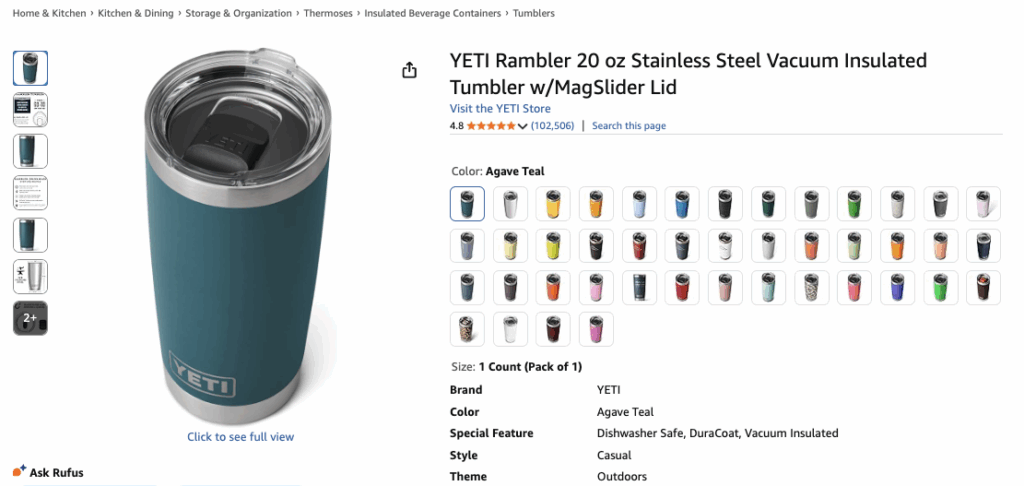
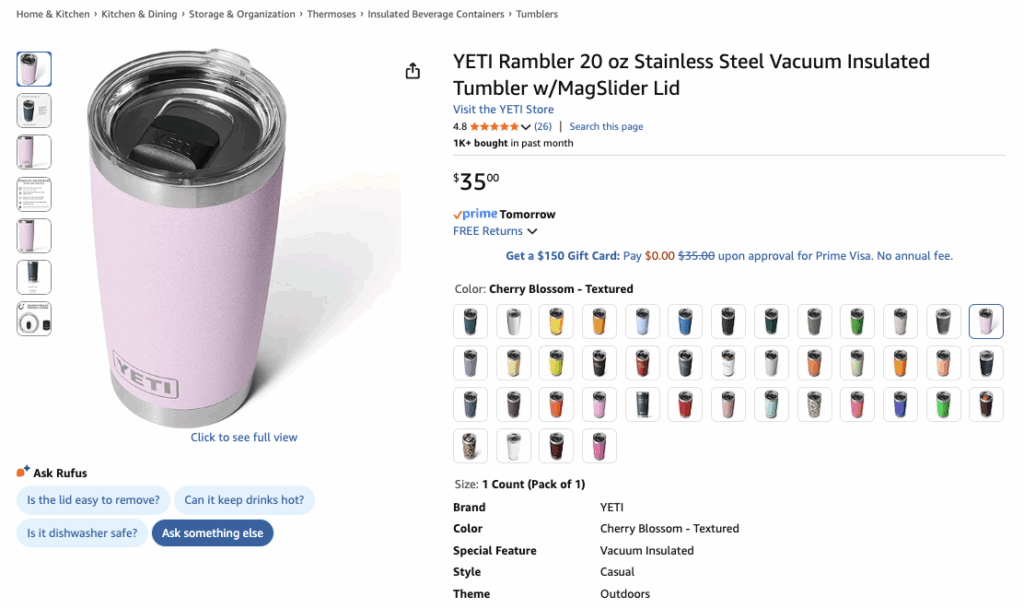
Digging deeper into how the experiment manifested on Amazon US, it becomes pretty clear that this change was concentrated across specific categories.
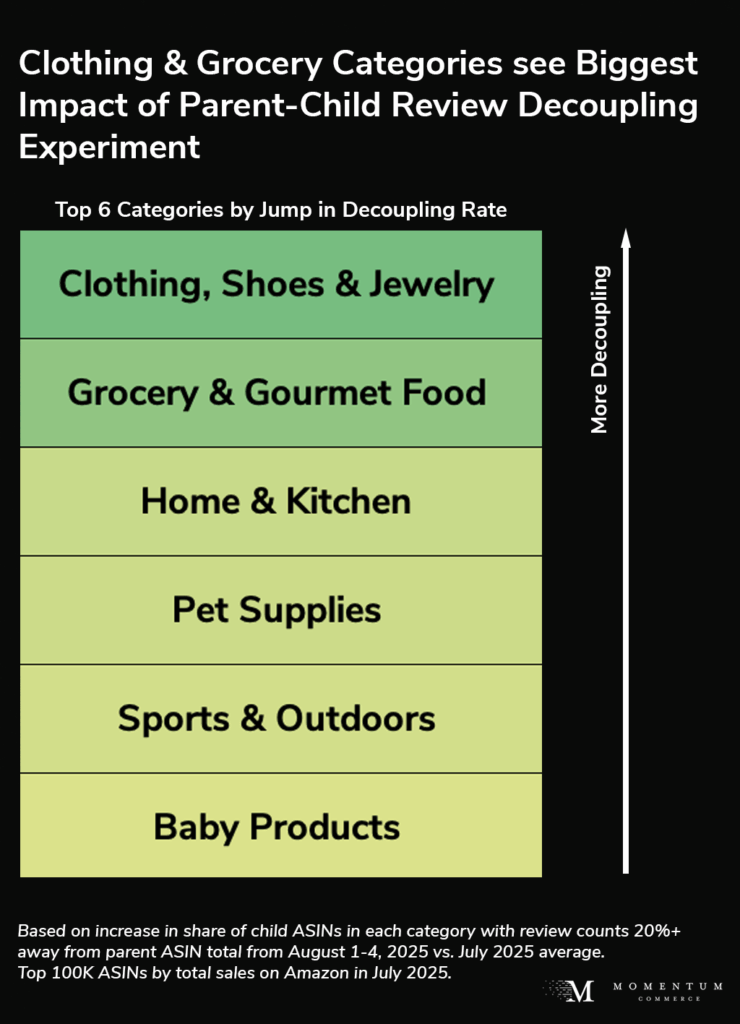
Amazon likely ran this experiment to study potential improvements to the customer experience in terms ‘social proof,’ across a few key areas.
Affected Categories
Breaking this down by category, you can see this phenomenon is largely concentrated in Clothing, Shoes & Jewelry, Grocery & Gourmet Food, and Home & Kitchen.
Non-Affected Categories
Conversely, Beauty & Personal Care and Toys & Games aren’t seeing a meaningful impact.
Electronics and Health & Household also are seeing minimal impact, but historically these categories have had more restrictions on review sharing with child variations due to specific features being crucial to purchase decisions.
Apparel and Grocery seemingly being the focus of this experiment likely stems from some degradation in terms of customer experience in those categories.
Why Clothing
Clothing was already a category where child ASIN review counts were decoupled from parents comparatively often even prior to the most recent increases.
The penchant for both legitimate and grey-market sellers to variate these ASINs to an extremely high degree, sometimes stretching the definition with things like older models or custom colors, was a big reason behind that.
Why Grocery
For Grocery, many brands nest a variety of flavors within a single parent ASIN to take advantage of higher review counts. But it makes intuitive sense that reviews for a ‘Cheddar and Onion’ variety of potato chips shouldn’t carry over to the ‘BBQ’ variety.
While the test has now seemingly concluded, it’s very possible Amazon could reintroduce this wider scale ‘decoupling’ another time, so we’ll continue to monitor any subsequent shifts. In the meantime, brands operating in Apparel and Grocery categories particularly should continue vigilantly monitoring review counts across parent and child variants, and adjusting accordingly. If you do find that one or more of your child ASINs are seeing decoupled review counts, you may want to consider reallocating ad spend and adjusting campaigns to focus on products that aren’t impacted.



